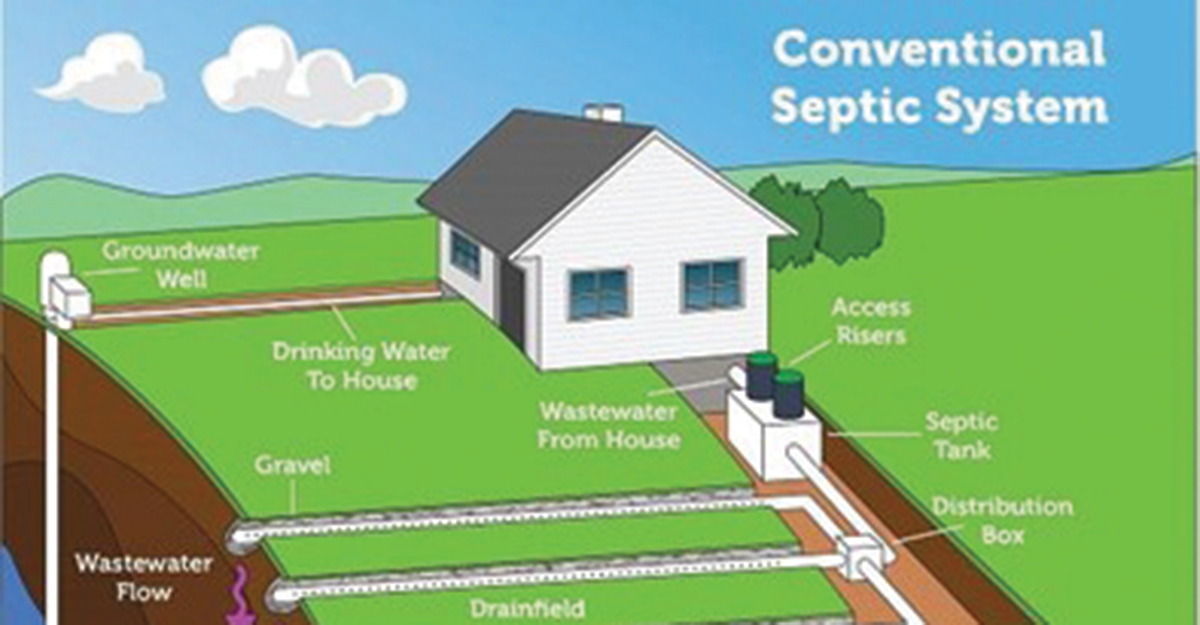Also known as onsite/decentralized wastewater treatment systems, septic systems treat sewage from homes and businesses that are not connected to a municipal sewer and treatment plant. They work simply: sewage and grey water flow out of the building into a septic tank that holds and settles solids in the wastewater while liquids continue to flow into a drainage field where they soak into the ground.
However, having your own onsite sewage solution does come with some added responsibilities and risks for homeowners. If the tank is full or broken, if the drainfield has failed and saturated with water, or harmful chemicals, wipes, and greases are flushed down the drain, the septic system can stop working correctly. Failed systems pose a risk to human and environmental health, as untreated sewage can pool in yards and enter our waterways and groundwater sources. Repairs can also be costly.
Learn how to prevent and spot the signs of failure here.
Signs of Failure
- Pooling water or muddy soil around your septic system
- Water backing up into your basement
- Your toilet or sink backing up when you flush or do laundry
- Strips of bright green grass over the drain field
What Can You Do?
- Don’t use excess water. Overloading the system is biggest reason for system malfunction. Space out large dishwashing and laundry loads.
- Don’t add additives – they only harm your system.
- Don’t damage it. The septic system is buried just beneath the ground surface and can be damaged if you pave over it, drive over it, or park on top of it.
- Don’t direct excess rain water to the area where the septic system is buried. Water from the septic tank travels through the laterals to drain through the soil. If the soil is already wet, the water may back up in your system or pool on the ground. Make sure downspouts and yard drainage are directed to other areas of your yard.
- Do install risers and inspection ports. Because the system is buried, it is difficult to inspect to check for problems leading to a malfunction. Small inspection ports are easy to install and can allow inspectors to easily check your system.
- Do get a yearly inspection. An annual inspection of the lateral lines will reveal possible problems.
- Do check septic tanks for damage every three years and pump out solid material when needed.
Save Money
If your septic system isn’t maintained, you will need to replace it, costing you thousands of dollars. If you sell your home, your septic system must be in good working order.
Protect the Environment
Proper maintenance of your septic system prevents the spread of infection and disease and protects water resources. Inadequately treated sewage from failed septic systems can cause groundwater contamination, posing a significant threat to drinking water. Improperly treated sewage that contaminates nearby surface waters also increases the chance of swimmers contracting a variety of infectious diseases.
Who Do You Call?
For a list of professional septic pumpers, installers, and inspectors, follow this link to the Environmental Health division of the Ingham County Health Department: https://health.ingham.org/health/environmental_health/well_and_septic.php.


